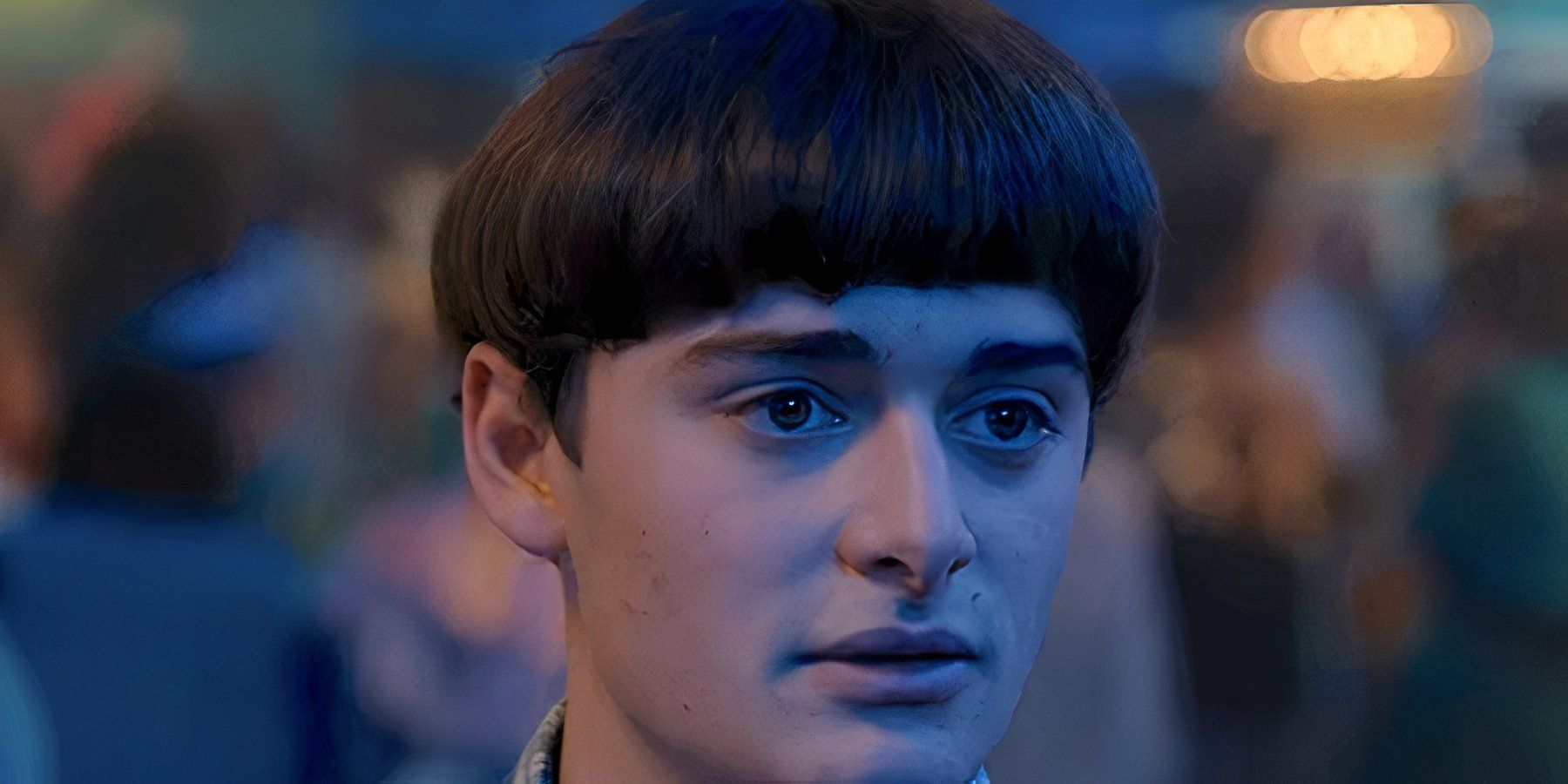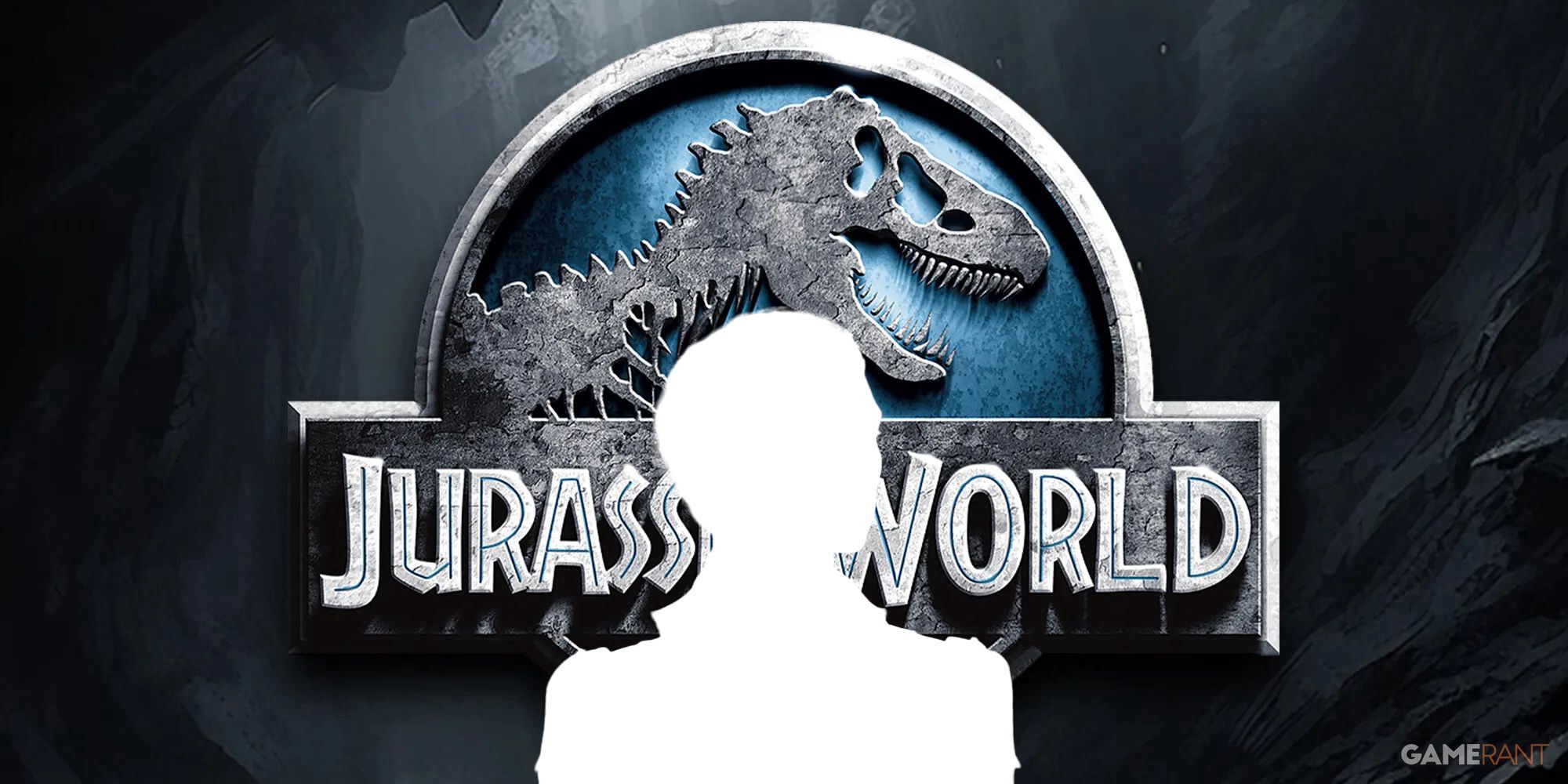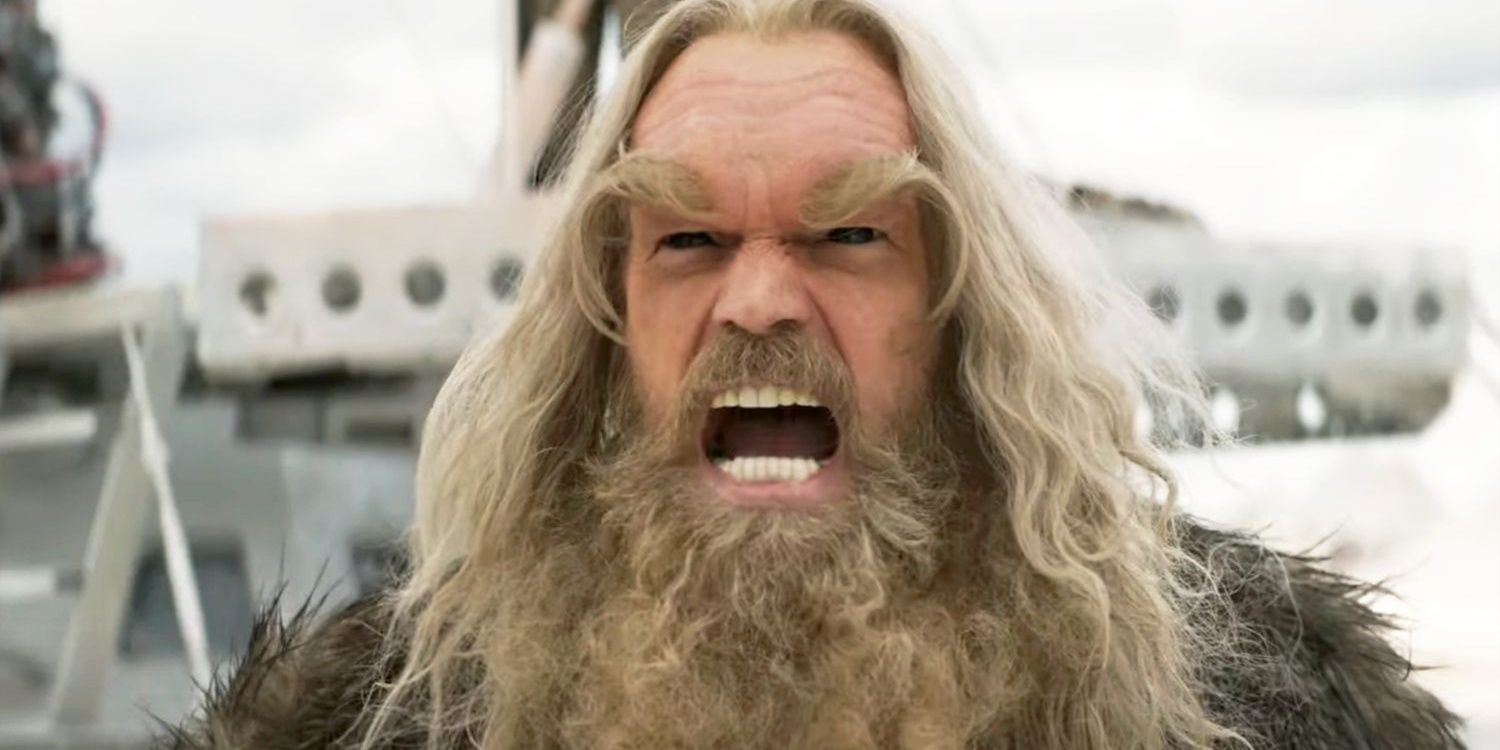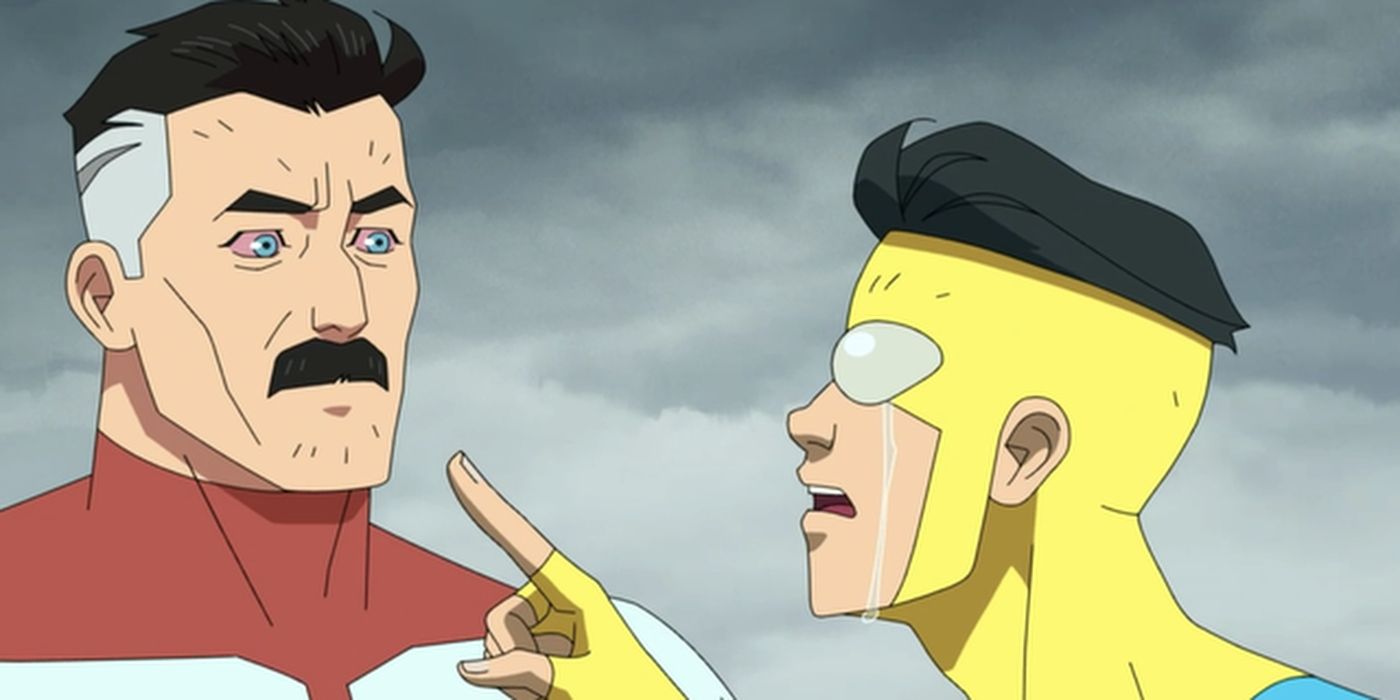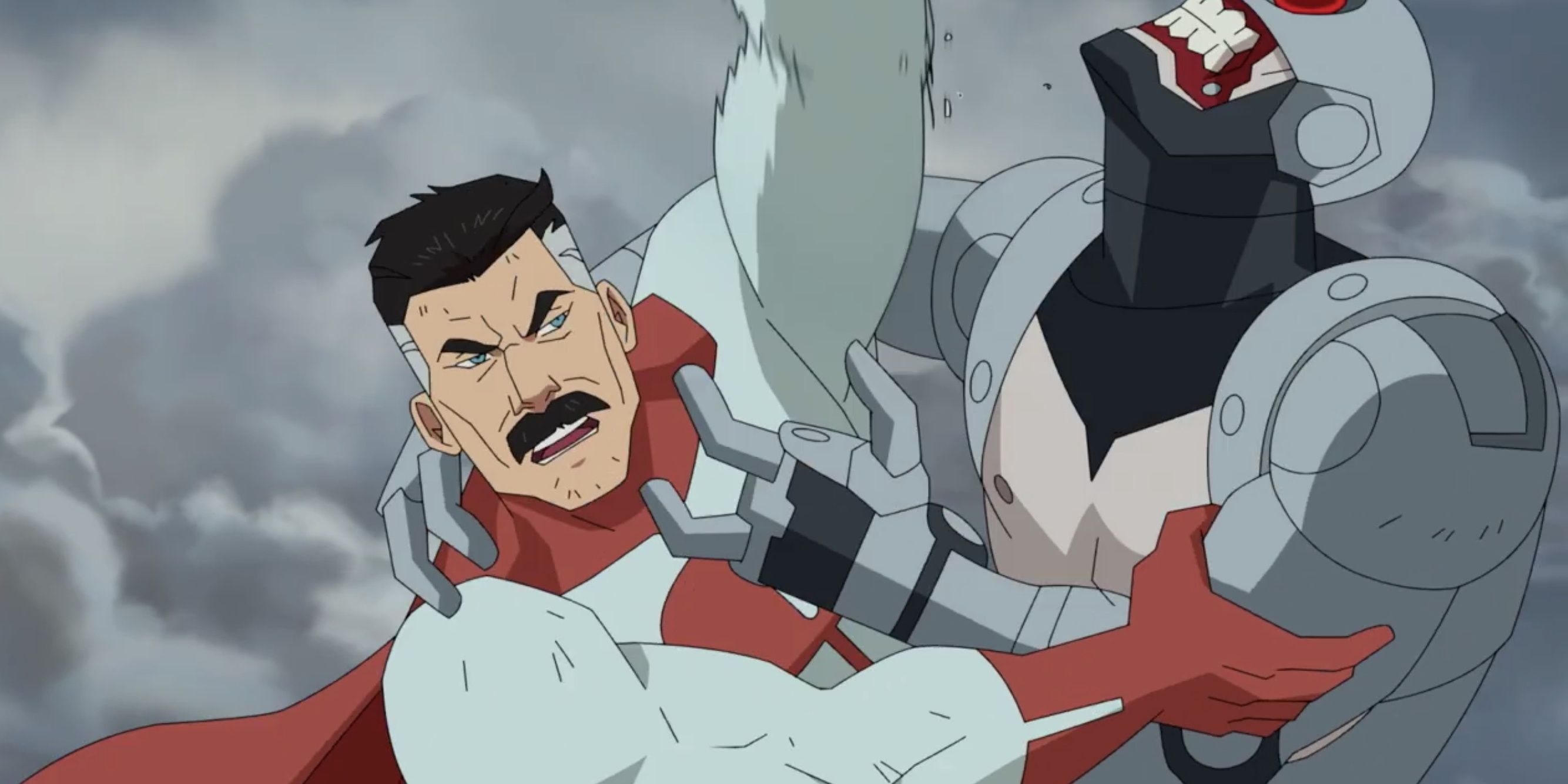The following contains spoilers for Invincible on Amazon Prime Video.
2021 has certainly been the year of the superhero TV show so far, and the release of Amazon Prime's Invincible is no exception. Invincible is an animated show based on a comic series of the same name by Robert Kirkman (who is also the creator behind The Walking Dead comics) and Cory Walker, and it follows Mark, the son of the most famous and powerful superhero in the world as he begins his own journey as a hero. The story touches on themes of family and the classic trope of a teen superhero trying to navigate life in high school while also fighting supervillains, but the show also focuses on the violence and destruction that would come along with superheroes existing in the world.
At times, this makes the show quite brutal, and there are numerous scenes that involve a lot of blood and gore (to clarify, this is definitely not an animated show aimed at kids). But this brutal, bloody story actually feels quite refreshing, because it feels like a much more realistic depiction of superhero life, despite the show's heightened nature. Most other superhero franchises seem to kind of gloss over the destruction that is caused when aliens or supervillains invade, and the number of innocent bystanders that would theoretically lose their lives in these conflicts. Invincible doesn't shy away from these topics, and that aspect of the show is one of the most interesting bits of commentary that it presents.
Other superhero properties often show a city street being destroyed in the midst of a battle between the heroes and the bad guys, but the story rarely lingers on the effects of that destruction. There's also usually an assumption that most innocent bystanders get out of the situation alive, as the street isn't usually littered with dead bodies. Captain America: Civil War is one of the few superhero movies that delves into this topic a little more, and explores the implications of the destruction that saving the world can bring, though it still goes about exploring this theme in a fairly non-violent manner, comparatively speaking.
In general, while superhero movies are full of action, they're not overly violent. More specifically, perhaps, they're not gory. There normally isn't a lot of blood in an MCU movie, even if someone has been beaten within an inch of their life (which is why the John Walker scene at the end of episode 4 of The Falcon and The Winter Soldier feels so impactful for the franchise). This is obviously so that they can keep their PG-13 rating and be accessible for families to watch, but it also requires the viewer to suspend their disbelief even more - which may not be difficult when watching films about superpowered individuals and aliens - and forget just how bloody and brutal most of these fights would be in real life.
This isn't to say that Invincible's violence is necessarily realistic, as it is often quite heightened and involves a lot of blood spurting and guts flung about, but it's significant that Invincible takes the time to focus on the violence at all, and reminds audiences who are probably neck-deep in superhero content that people would get seriously hurt in these situations. The heroes obviously get hurt, but those who seem to suffer even more are the normal citizens that are just trying to live their daily lives until an alien shoots a laser through them or Omni-Man drops a building on them.
The violence in Invincible is central to the story. Mark wants to be a superhero so he can help people, and when the very citizens he's trying to protect die, it shows that heroes can't save everyone, even if they're doing everything they can. It's a difficult moral conflict, and one that has been missing from most superhero movies in the past. Invincible is even able to separate itself from a show like The Boys, which is violent, but also very cynical. Invincible still carries this sense of hope through the show, with various characters remaining optimistic that they are improving the world, and that by doing what they're doing, they can still save a lot of people.
Showing violence in this way in the show helps to expand on its themes, but there are times when that violence becomes so much that it can turn someone's stomach a little, which might alienate some viewers. The prime example of this is in the final episode in the battle between Mark and his father, where the audience watches this man beat his son into a bloody pulp, or (perhaps even more shockingly) the scene where Omni-Man holds Mark in front of a moving train and plows his body through every car, killing every single occupant of the train along the way. It's incredibly disturbing, despite the bright and cartoony animation style, and it really makes one reconsider the kind of damage that superheroes or villains could bring to the people around them. Of course, Omni-Man's massacre of the Guardians of the Globe at the end of the first episode immediately informs audiences of what type of show this is going to be, but it doesn't make that final episode any less gut-wrenching.
It would be easy to write the violence in the show off as overly gratuitous, but it really serves a purpose. The show takes a hard look at the devastation that would really be caused in the wake of a giant battle between superpowered individuals, and how it could absolutely level a city. Other superhero franchises often gloss over these facts, or present them in a much more palatable way, but Invincible makes viewers feel it viscerally. It will be interesting to see where future seasons of the show take this commentary, and whether or not they will follow the comics or take some slight diversions. Invincible is already setting itself apart from other superhero properties, and if it continues to look at the real-world impact heroes would have, it could be a really refreshing take on the genre.

